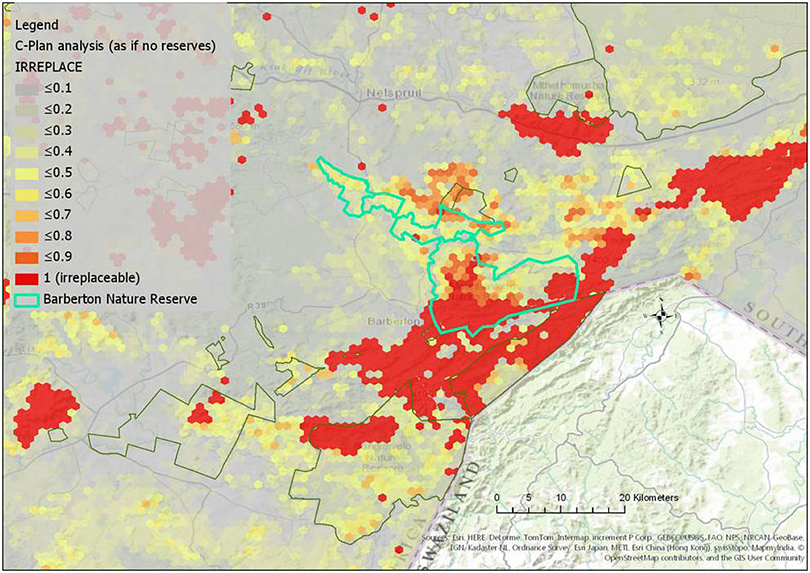Well known plant collectors and botanists such as George Thorncroft, Ernest Galpin and Harry Bolus collected plants and insects in the area and several species have been named after them. Over the years since then various other individuals, scientific and conservation institutions have collected and identified several new species as the mountainous terrain creates a host of microenvironments at different altitudes where plants can adapt, change and find an opportunity to thrive. In early 2013 efforts began in earnest to build up a representative herbarium for the plants of the Barberton Greenstone Belt that will be housed on Mountainlands Nature Reserve. This is done through the efforts and contributions of various botanists, citizen scientists as well as academic, government and private herbariums.
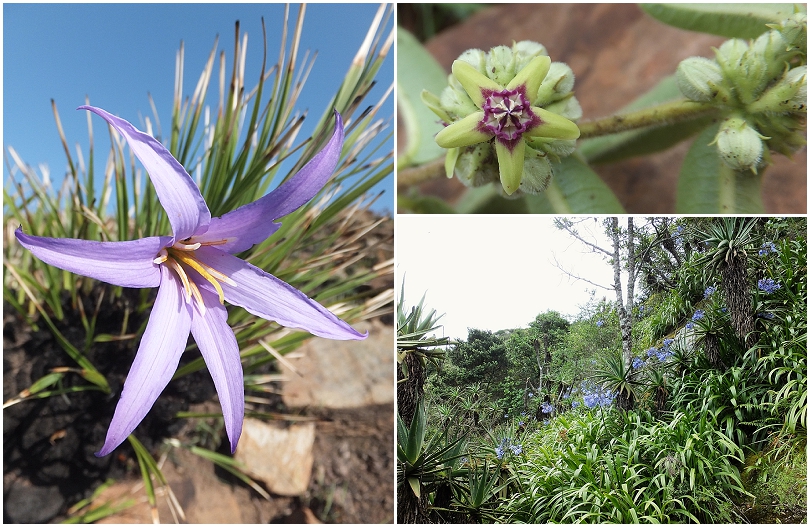
This area’s plant species diversity is second only in southern Africa to the Cape Fynbos and is markedly higher than that of the Kruger National Park. The unique geology of the Barberton Greenstone Belt underlies a diversity of approximately 2176 plant species discovered to date, an unusually high proportion of which are endemic to the area (meaning limited in range to a specific geographical area). It is home to such well known plants as the Barberton Daisy (Gerbera jamesonii) that has become a popular ornamental plant throughout the world, the spectacular Pride-of-de-Kaap (Bauhinia galpinii), beautiful proteas, endemic aloes and cycads.
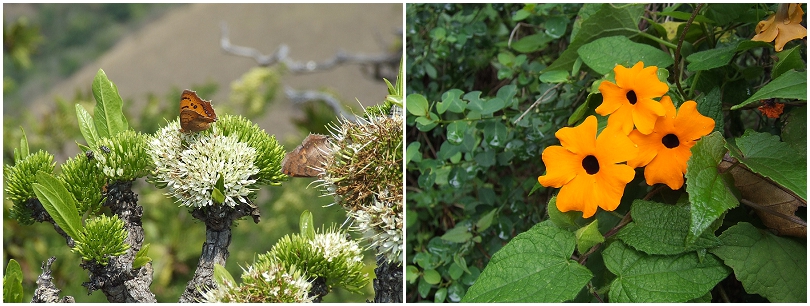
Plants differ widely through the various habitats, many of which can be encountered within a short walk from one another. The vegetation is mostly Sour Bushveld of the Savanna Biome merging into the North-eastern Mountain Sourveld of the Grassland Biome at higher elevations. The range in elevation and broken mountainous topography support a rich biodiversity (both plant and animal species), which also includes various elements of the Cape Fynbos.
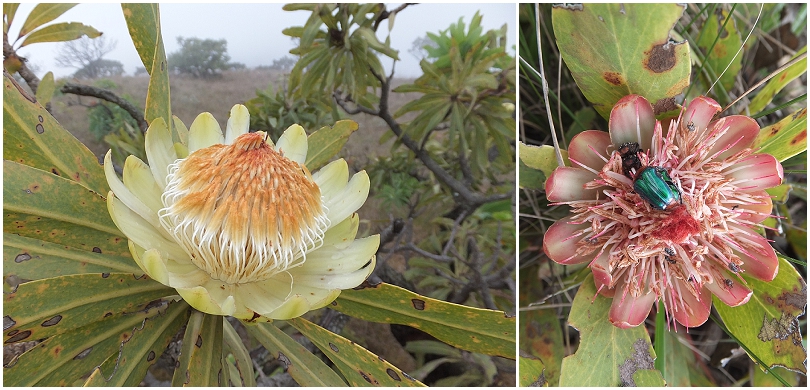
Along the riverine fringes and lower valleys magnificent trees feature prominently. The isolated south facing Barberton Scarp Forests located in the Dycedale and Wonderscheur area of the reserve are considered unique and protection worthy in their own right. Here large yellowwood trees, orchids and other mist belt forest plants are found in abundance.
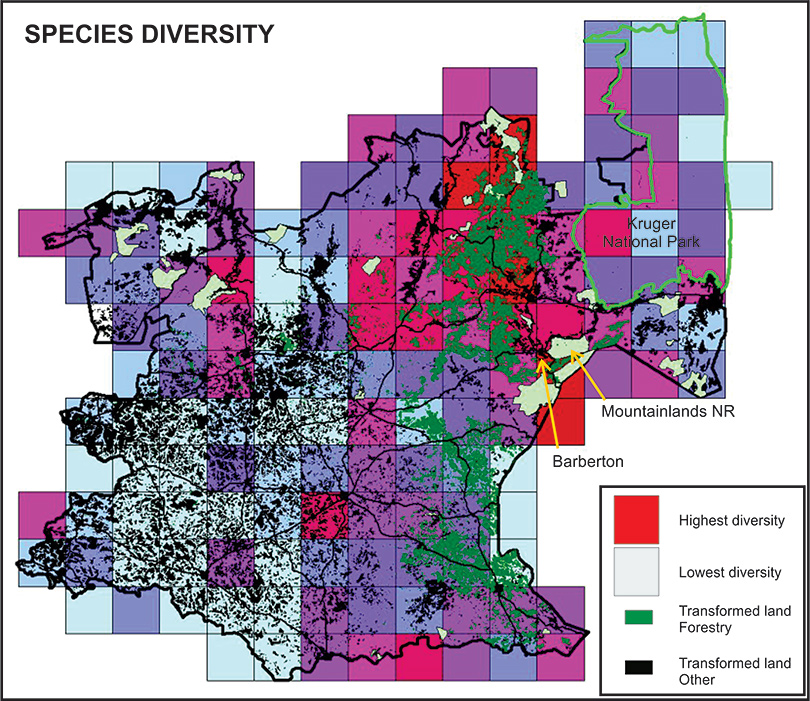
Barberton Centre of Plant Endemism
Regional centres of endemism have at least 50% of their species confined to them, as well as having more than 1000 endemic species. Two regions of Plant Endemism are recognized within Mpumalanga. These are the high lying Drakensberg Afromontane Region (DAR) and the more tropical Maputaland-Pondoland Region (MPR). The number of plant species restricted to the DAR is not known, but species endemism is high. This region incorporates a number of distinct centers such as the Barberton, Wolkberg and Lydenburg centers within Mpumalanga.

The Barberton Center of Plant Endemism (BCPE) is shared with Swaziland and is largely a result of the surface-outcrops of volcanic sedimentary rocks belonging to the Barberton Supergroup. Outcrops of serpentinite occur throughout the BCPE, and these rocks give rise to soils with unusually high magnesium: calcium ratios. These soils, together with those derived from ultramafic rocks, are also associated with high concentrations of heavy metals, which are potentially toxic to plants. At least 30 plant species of the BCPE are edaphic (influenced by soil) specialists, adapted to the serpentine soils.
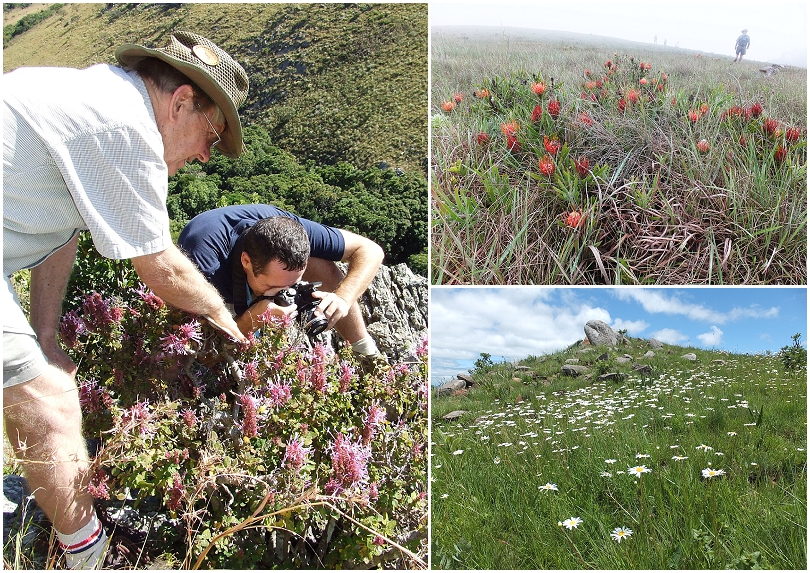
Two sub centres can be identified within the BCPE, based on the distribution of endemic or near endemic plant species recorded for each of these areas. The fundamental bases on which the endemics have evolved is markedly different between the two subunits and warrant separation. Firstly, the Makhonjwa sub-centre occurs throughout the BCPE wherever ultramafic (incorporating serpentine) derived soils are absent. Secondly, the Komati/De Kaap sub-centre occurs on the serpentine and ultramafic derived soils, extending over a range of altitudes. Approximately 30 species are strictly endemic to this sub-centre.
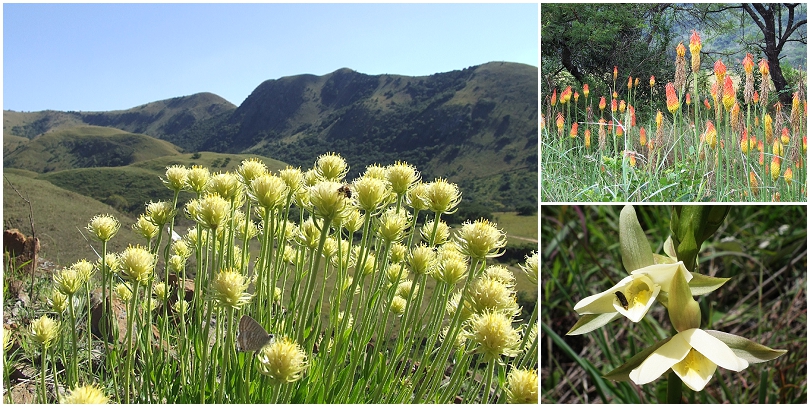
Most of the BCPE’s endemics are confined to the grassland areas with a few woody serpentine endemic plants in the lower lying areas. The endemics are largely herbaceous with endemism notably high in the Iridaceae, Lamiaceae, Liliaceae and Asteraceae.
The Barberton mist belt forests are situated within the BCPE and are characterized by the occurrence of the following plant species unique and endemic or near endemic to this area: Pavetta barbertonensis, Psoralea glabra, Ochna gamostigmata, Allophylus chaunostachys, Pavetta galpinii, Cola greenwayi, Garcinia gerrardii, Sapium integerrimum, Bersama lucens, Cassinopsis tinifolia, Encephalartos pucidentatus, Encephalartos Henanii, Aphloia theiformis, Micrococca capensis, Chionanthus peglerae, Heterosamara galpinii (= Polygala galpinii), Aloe thorncroftii, and Clivia miniata.
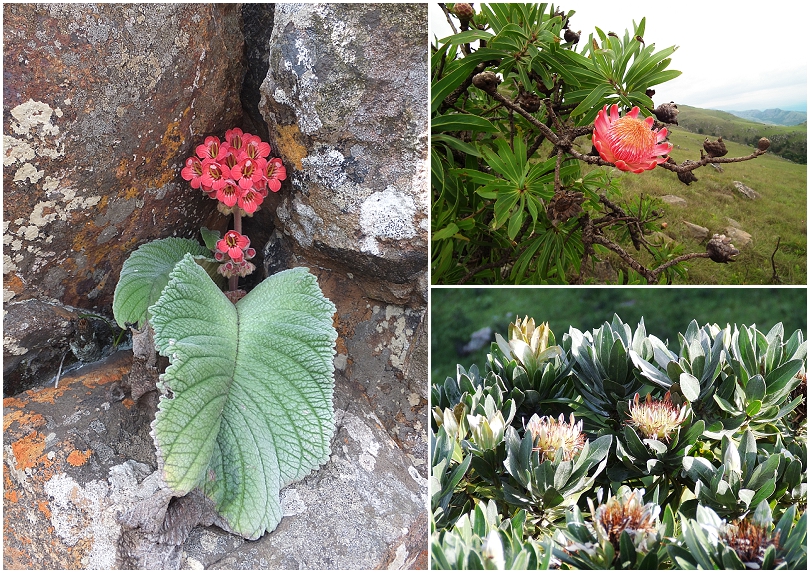
Cycad species, found in the BCPE, include Encephalartos paucidentatus and E. heenanii, which is virtually confined to a small area adjacent to Mountainlands. The Barberton Sugarbush (Protea curvata) is only found on a few rocky slopes in the De Kaap Valley. The largest population of the Saddleback Sugar bush (Protea comptonii) is found in Mountainlands with only a small population occurring further south.
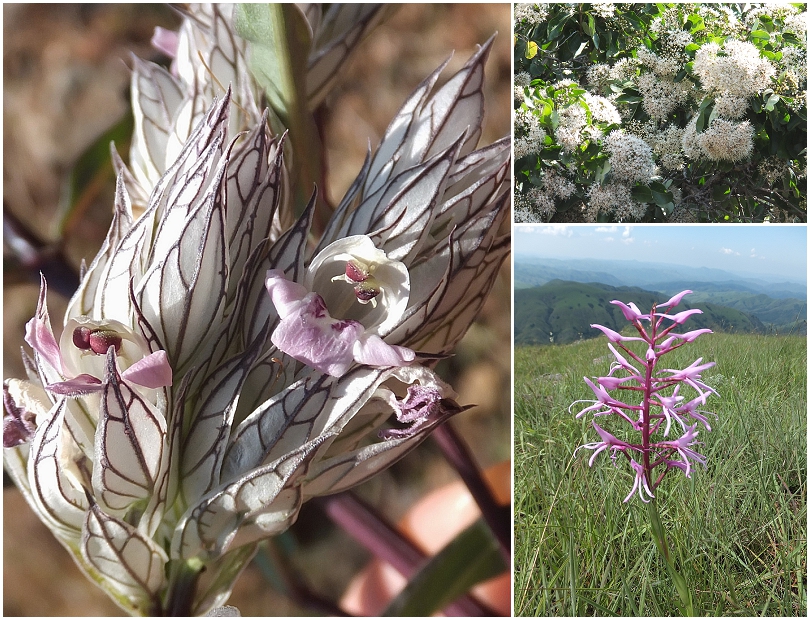
Apart from global warming, the plants in the BCPE are threatened by fire misuse, alien plant infestation, over-grazing, timber plantations, uncontrolled bark-harvesting, mining and firewood collection.
Biodiversity values
The conservation significance of Mountainlands is reflected in the below map which indicates biodiversity irreplaceability values for the area.

